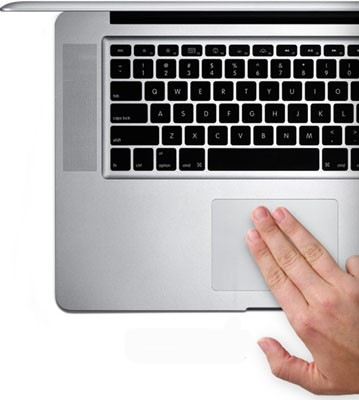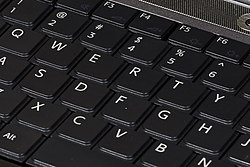As handy as it is, some people do not like using a mouse or have difficulty maneuvering one. For some, a mouse requires too much desktop space - a real problem when you do not always work at a desk!
For these reasons and others, hardware makers have developed various input devices that duplicate the mouse's functionality but interact with the user in different ways. The Primary goals of these " mouse variants" are to provide ease of use while taking up less space than a mouse. They all remain stationary and can even be built into the keyboard.
The Trackball:
For these reasons and others, hardware makers have developed various input devices that duplicate the mouse's functionality but interact with the user in different ways. The Primary goals of these " mouse variants" are to provide ease of use while taking up less space than a mouse. They all remain stationary and can even be built into the keyboard.
The Trackball:
A trackball is a pointing device that works like an upside down mouse. You rest your thumb on the exposed ball and your fingers on the buttons. To move the pointer around the screen. You roll the ball with your thumb. Because you do not move the whole device, a track ball requires less space than a mouse. When space is limited, a trackball can be an advantage. Trackballs gained popularity with the advent of laptop computers , which typically are used on laps or on small work surfaces without room for a mouse.
Like mice, trackball come in different models. Some trackballs are large and heavy , with a ball about the same size as a cue ball. Others are much smaller. On portable computers, trackballs may be built directly into the keyboard, slide out of the system unit in a small drawer, or clamp to the side of the keyboard . Most trackballs feature two buttons, although three-button models are also available. Trackball units also are available in right and left handed models.
Some trackballs are not even attached to the computer and act like a remote control for the pointer . They are especially useful when giving presentations because the presenter often walks around the room instead of sitting at a computer.
The Track pad:
Track pad is a stationary pointing device that many people find less tiring to use than a mouse or track ball. The movement of a finger across a small touch surface is translated into pointer movement on the computer screen. the touch sensitive surface may be only 1.5 or 2 inches square, so the finger never has to move far. The track pad's size also makes it suitable for a notebook computer. Some notebook models feature a built in track pad rather than a mouse or trackball.
Like mice, track pads usually are separate from the keyboard in desktop computers and attach to the computer through a cord. some special keyboards feature built in track pads. this feature keeps the pad handy and frees a port that would otherwise be used by the track pad.
Track pads include two or three buttons that perform the same functions as mouse buttons. some track pads are also " strike sensitive ". Meaning you can tap the pad with your fingertip instead of using the buttons.
One draw back of track pads is that they must be kept clean and static free. Buildup of dust and oils from the user's fingers can affect a track pad's performance, making it less sensitive the touch.an unwanted static charge can make a track pad behave erratically.
Pointers in keyboard:
Several computer manufacturer now offer another space saving pointing device, consisting of a small joystick positioned near the middle of the keyboard, typically between the G and H keys. The joystick is controlled with either forefinger. Because users do not have to take their hands off the keyboard to use this device, it can save a great deal of time and effort. Two buttons that perform the same function as mouse buttons are just beneath the space bar and are pressed with the thumb. Because it occupies so little space the device is built into many different laptop mdels. This type of pointing device is also available on some models of desktop computer keyboards.
Several generic terms have emerged for this device many manufacturers refer to it as an integrated pointing device, while others call it a 3-D point stick. On the IBM Think Pad line of notebook computers, the pointing device is called the track point.



Technology: Variants Of The Mouse >>>>> Download Now
ReplyDelete>>>>> Download Full
Technology: Variants Of The Mouse >>>>> Download LINK
>>>>> Download Now
Technology: Variants Of The Mouse >>>>> Download Full
>>>>> Download LINK d7